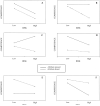The construct of resilience: a critical evaluation and guidelines for future work
- PMID: 10953923
- PMCID: PMC1885202
- DOI: 10.1111/1467-8624.00164
The construct of resilience: a critical evaluation and guidelines for future work
Abstract
This paper presents a critical appraisal of resilience, a construct connoting the maintenance of positive adaptation by individuals despite experiences of significant adversity. As empirical research on resilience has burgeoned in recent years, criticisms have been levied at work in this area. These critiques have generally focused on ambiguities in definitions and central terminology; heterogeneity in risks experienced and competence achieved by individuals viewed as resilient; instability of the phenomenon of resilience; and concerns regarding the usefulness of resilience as a theoretical construct. We address each identified criticism in turn, proposing solutions for those we view as legitimate and clarifying misunderstandings surrounding those we believe to be less valid. We conclude that work on resilience possesses substantial potential for augmenting the understanding of processes affecting at-risk individuals. Realization of the potential embodied by this construct, however, will remain constrained without continued scientific attention to some of the serious conceptual and methodological pitfalls that have been noted by skeptics and proponents alike.
Figures
Comment in
-
The odds of resilience.Child Dev. 2000 May-Jun;71(3):563-6; discussion 573-5. doi: 10.1111/1467-8624.00165. Child Dev. 2000. PMID: 10953924
-
Some thoughts about resilience versus positive development, main effects versus interactions, and the value of resilience.Child Dev. 2000 May-Jun;71(3):567-9; discussion 573-5. doi: 10.1111/1467-8624.00166. Child Dev. 2000. PMID: 10953925
-
Are there implications for prevention research from studies of resilience?Child Dev. 2000 May-Jun;71(3):570-2; discussion 573-5. doi: 10.1111/1467-8624.00167. Child Dev. 2000. PMID: 10953926
References
-
- Achenbach TM. Taxonomy and comorbidity of conduct problems: Evidence from empirically based approaches. Development and Psychopathology. 1993;5:51–64.
-
- Achenbach TM, McConaughy S, Howell CT. Child / adolescent behavioral and emotional problems: Implications of cross-informant correlations for situational specificity. Psychological Bulletin. 1987;87:213–232. - PubMed
-
- Anthony EJ. Introduction: The syndrome of the psychologically vulnerable child. In: Anthony EJ, Koupernik C, editors. The child in his family: Children at Psychiatric Risk. Vol. 3. Wiley; New York: 1974. pp. 3–10.
-
- Baldwin AL, Baldwin CP, Cole R. Stress-resistant families and stress-resistant children. In: Rolf J, Masten A, Cicchetti D, Nuechterlein K, Weintraub S, editors. Risk and protective factors in the development of psychopathology. Cambridge University Press; New York: 1990. pp. 257–280.
-
- Baldwin AL, Baldwin CP, Kasser T, Zax M, Sameroff A, Seifer R. Contextual risk and resiliency during late adolescence. Development and Psychopathology. 1993;5:741–761.
Publication types
MeSH terms
Grants and funding
LinkOut - more resources
Full Text Sources
Other Literature Sources
Medical
Research Materials


